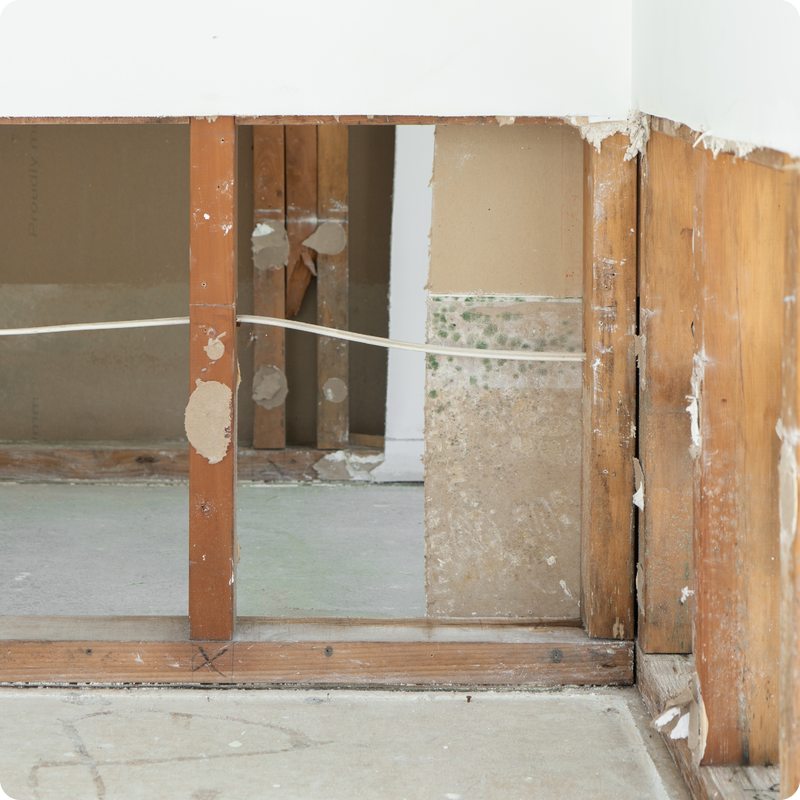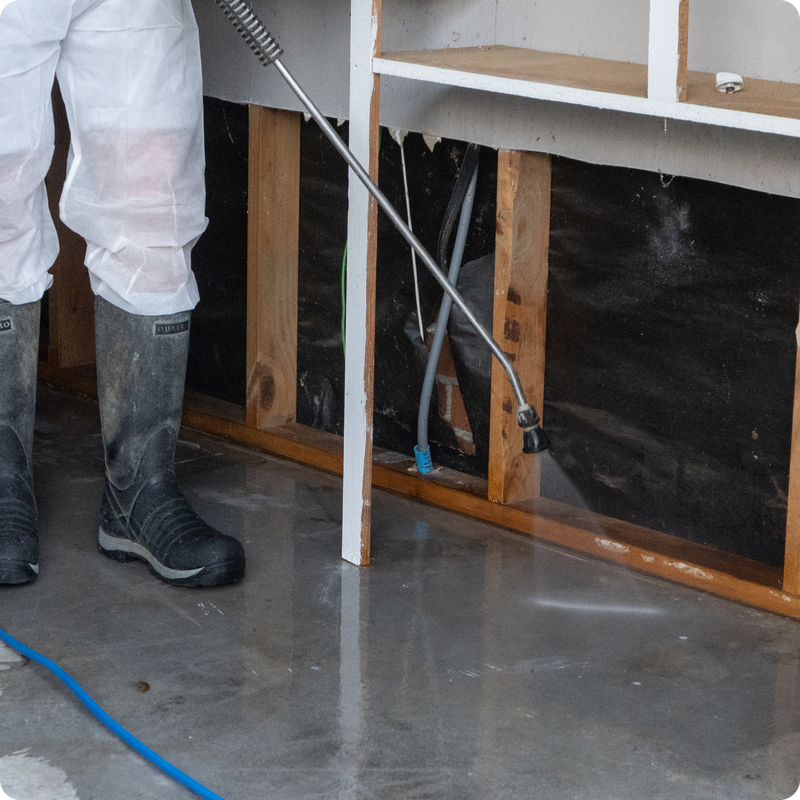Mould & Asbestos: How Bad Is It, Really?
Thinking back on the time you became a new homeowner, there was a lot on your mind. Picking out your forever home, you probably thought long and hard about what neighbourhood you prefer, how many bedrooms you need, and the ideal price range. When it came time to decide on a home, maybe it was the large yard, the hardwood floors, or the high ceilings that finally swayed you. What you probably didn’t consider when choosing your new home was the air quality. And for good reason – the air is invisible, and as long as you didn’t smell anything funky you assumed the air was just fine. Little did you know, the air quality was dangerously low because of mould growth and asbestos hidden in the depths of the foundation, behind the walls and in the ceilings. Whether it be from flood water damage or old building materials, many homes are at risk. Chem-Dry Supercity often comes across asbestos and mould when we are completing a flood restoration or remediation effort. It can be quite serious so contact us as soon as you can after a flood. The air in your home presents an opportunity for all sorts of invisible airborne chemicals and bacteria, but mould and asbestos are the two standouts. What we’ve learned about mould and asbestos over the last couple decades is unquestionable – they’re both extremely toxic and can wreak havoc in our respiratory system, causing short-term symptoms as well as long-term health issues like cancer.
What Is Mould?
Mould growth comes from the buildup of moisture in your home. Also known as mildew, mould is a fungal growth that can grow indoors and outdoors and in every type of climate. Outdoors, mould grows naturally in wet areas like forests and around bodies of water. But indoors, as long as there’s a little moisture, mould can spread using the carbon from building materials like wood, carpets and drywall.
The Danger Of Mould
There are thousands of varieties of mould. Curiously, many strains of mould aren’t harmful to touch or ingest. The danger of most mould comes from the airborne mycotoxins that spawn from mould growth. The mould acts as a breeding ground for dangerous pathogens. Mould can induce allergic reactions, including sneezing, runny nose, red eyes and skin rashes. Like most things, some people will be more susceptible to the dangers of mould. For those with asthma, mould can trigger a reaction and become extra dangerous. And if you have a skin condition like eczema, you’re at a higher risk of mould exposure. In general, anyone with a weakened immune system is more at risk, which includes the elderly, babies and young children, and anyone with pre-existing respiratory issues.
How To Deal With Mould Found In The House
To start, don’t touch it. While many types of mould aren’t harmful, some will be – especially if you have a weak immune system or health issues that put you at risk. If you catch mould in the early stages, you should be able to tackle it with cleaning detergent or diluted vinegar and a cloth. When mould is out in the open, like in the shower, it’s easy to detect and eradicate. Where mould gets tricky is when it’s hidden behind the walls, under the flooring or in the ceiling. Chances are, by the time you notice mould in these areas, it’s too late for a simple home remedy. In that case, it’s time to call Chem-Dry Supercity. Our mould removal technicians can treat mouldy carpets, remove mould spores from upholstery, and remove mould from other furnishings including walls and ceilings. Reach out today for a free mould removal estimate. Lemon juice is also acidic, which gives it some cleaning muscle, but it isn’t that strong at the end of the day. It probably won’t work against tougher stains that end up on your carpets, but it may be effective on clothing. Just make sure you only use it on white clothing, as the acidic properties may damage the colour. To use lemon juice as a stain remover, first, mix it with a good amount of water or even some cleaning detergent. For your white clothes, you could even add a little salt to the mixture. And always use water to rinse after you’re through.
What Is Asbestos?
Asbestos is a blanket term used to describe a group of six naturally occurring minerals. These minerals are made of insulating heat-resistant fibres, making them extremely useful for a wide range of manufacturing situations. Because asbestos is resistant to heat, fire, chemical, and biological breakdown, home building materials have been made with asbestos for a long time.
The Danger Of Asbestos
When asbestos is dry, it can be crumbled, pulverized or powdered. When this happens, the small fibres can be released into the air as dust. Inhaling this asbestos in dust-form is where the primary risk comes from. The risks of asbestos exposure are far more dangerous than mould. No amount of asbestos is considered safe, and products with at least 1% of asbestos minerals are considered asbestos-containing. Exposure to asbestos can lead to life-threatening conditions like mesothelioma, asbestosis and lung cancer. Asbestos can also poison your digestive system, leading to other issues like colon cancer. Unlike mould, it won’t be obvious when you become poisoned by asbestos. It won’t make you sneeze, cough, or make your skin itchy. The latency period for asbestos poisoning is 10 to 40 years, which means you won’t feel sick or notice any symptoms for a long time. As soon as it enters the air, anyone that enters the space is at risk.
How To Deal With Asbestos
Since the 1980’s, asbestos has been banned in dozens of countries, including New Zealand. While that means new products aren’t allowed to be built with asbestos, there is still plenty of asbestos out there. These minerals were used widely before the 1980s, which means there’s a good chance many older homes and buildings are at risk. When it comes to treating asbestos, you have two options: repair or removal. If you choose to repair, that will involve treating the affected material with a sealant which either binds the asbestos fibres together or coats the material so fibres aren’t released. When you cover asbestos, it remains in place. While this may be the cheaper option upfront, if the asbestos has to be removed later it will become a costlier process. The other option is to completely remove the asbestos from your home. This option is the most expensive, and also the riskiest. The removal process is complex, and can often cause the fibres to be accidentally released. Make sure to call an asbestos removal professional for this type of job, and only do so if ordered or required by law.
We Can Help
SuperCity Chem-Dry are the residential cleaning professionals in Auckland. We specialise in carpet cleaning, upholstery cleaning, flood water damage and restoration. We also clean mattresses, leather couches, tile and grout, and just about anything you can think of in your home.



